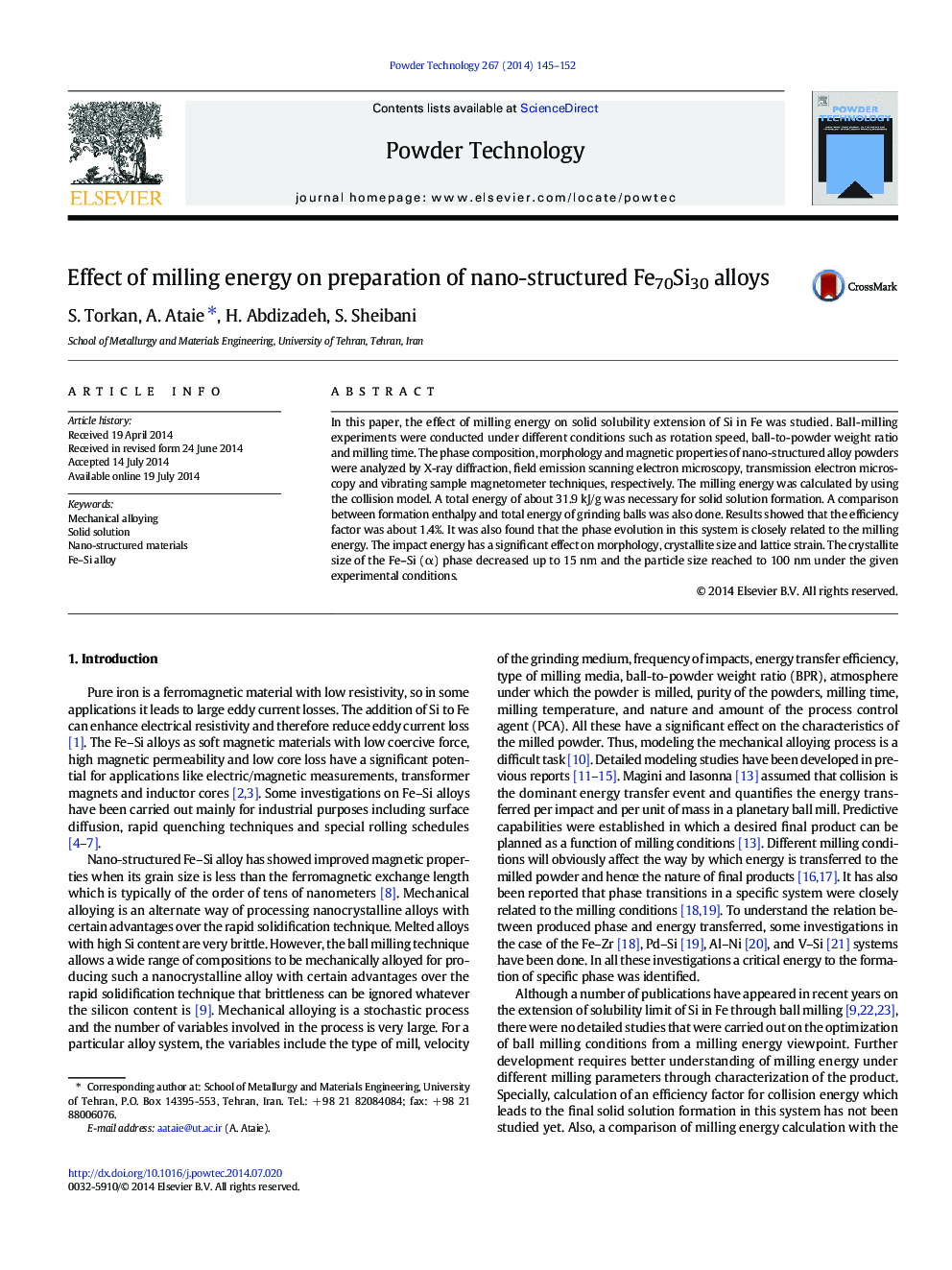| Article ID | Journal | Published Year | Pages | File Type |
|---|---|---|---|---|
| 236008 | Powder Technology | 2014 | 8 Pages |
•Total energy is a key parameter to find out the produced phases.•A total energy of about 31.9 kJ/g is necessary for solid solution formation.•Milling efficiency of process was estimated to be 1.4%.•Amorphous phase formed in high intense milling condition
In this paper, the effect of milling energy on solid solubility extension of Si in Fe was studied. Ball-milling experiments were conducted under different conditions such as rotation speed, ball-to-powder weight ratio and milling time. The phase composition, morphology and magnetic properties of nano-structured alloy powders were analyzed by X-ray diffraction, field emission scanning electron microscopy, transmission electron microscopy and vibrating sample magnetometer techniques, respectively. The milling energy was calculated by using the collision model. A total energy of about 31.9 kJ/g was necessary for solid solution formation. A comparison between formation enthalpy and total energy of grinding balls was also done. Results showed that the efficiency factor was about 1.4%. It was also found that the phase evolution in this system is closely related to the milling energy. The impact energy has a significant effect on morphology, crystallite size and lattice strain. The crystallite size of the Fe–Si (α) phase decreased up to 15 nm and the particle size reached to 100 nm under the given experimental conditions.
Graphical abstractFigure optionsDownload full-size imageDownload as PowerPoint slide
